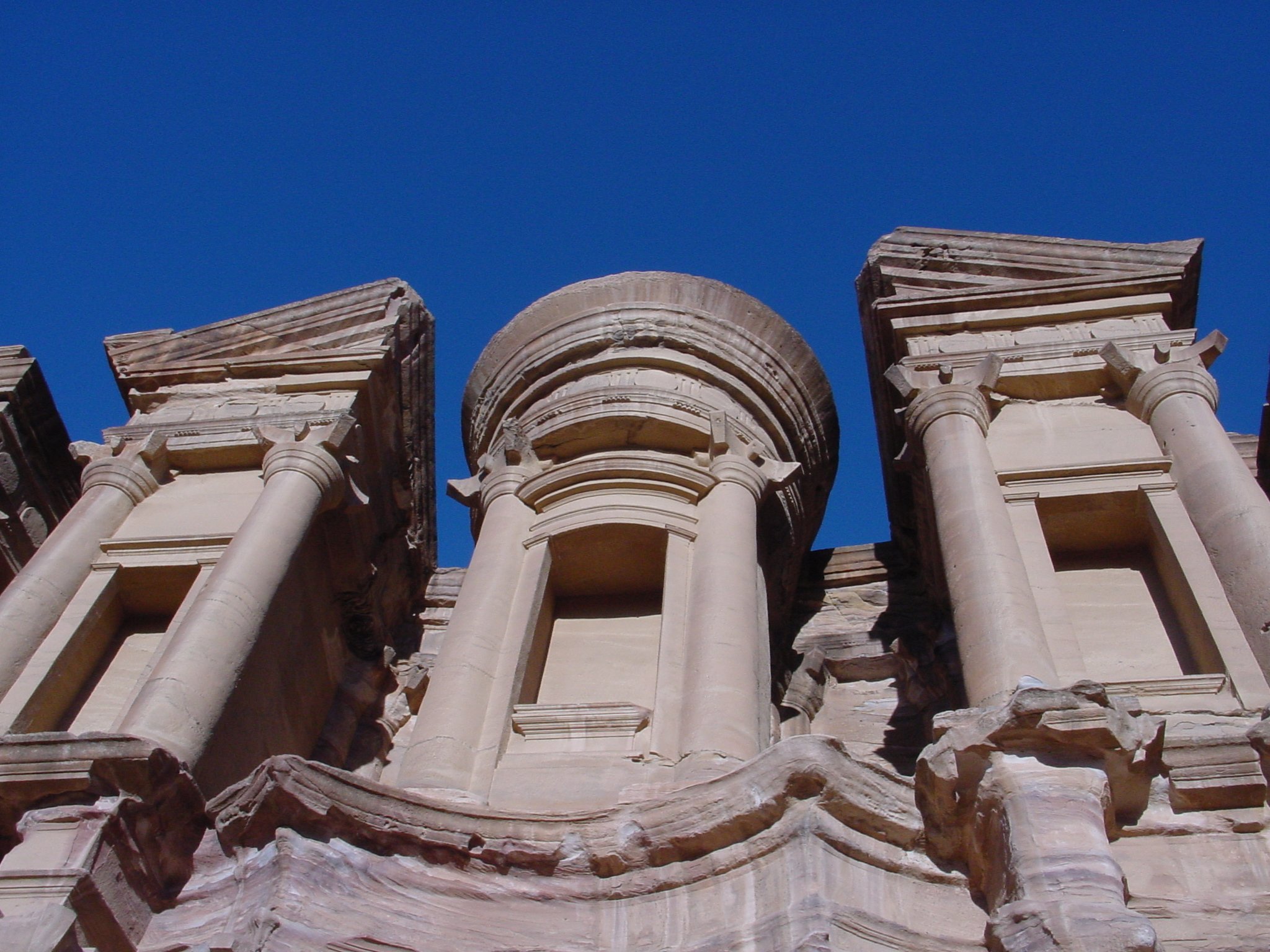December 28, 2003
Petra’s remarkable caves have provided shelter for centuries.
We have one more day here in Petra, and so we made the most of it, picking up Jonathan (who was staying at a different hotel nearby) in the morning before packing up the car for our drive back to Amman later on.
Marthame and Elizabeth along the collonaded road at Petra.
Incredible stone detail at Petra.
Petra’s Byzantine monastery.
The magnificent Byzantine monastery of Petra.
The Bedouin bring their goats to Petra to graze.
We passed through the first half of Petra with little thought for what we had already seen yesterday. Again, it reminded us strongly of an earlier trip to Zion National Park, where we wandered the vast crevices carved into the rock. This time, we weren't up to our chests in water, but it was no less wondrous.
We had an early breakfast overlooking the amphitheater, the place which had so caught our eye yesterday. We then eagerly looked forward to Jonathan's favorite part of the site, the collanaded road, which led us toward the the long ascent to the Monastery, a place of worship for the Byzantines, which had once been a Nabatean temple. Just out of sight of the town of Wadi Mousa, the structures lay "undiscovered" for centuries after their abandonment, though it is likely that the Bedouin made good use of the manmade caves.
Though less-detailed than the Treasury, the Monastery is no less impressive. We tried to climb to the top to sit in its cupola. Jonathan had done this on a previous visit, and we had seen postcards of people sitting in the cupola, so we thought little of it. But we were shouted down by the first park security guard we had seen. We were disappointed, but made the most of the extra time not spent on the cupola by wandering up to a few high peaks to view the vast desert that lay beyond and catching a bit of a nap before making our way back down.
The paths of Petra are dotted with Bedouin women selling trinkets and Bedouin men offering rides on camels, donkeys, and horses. When Jordan turned this place into a national site, they reached an agreement with the Bedouin living there, that they would have to relocate to offsite housing but could still graze their animals and would have exclusive rights to sell on the premises. Beats the settlement Israel offered the Jahallin Bedouin, some of whom were given shipping containers to live in, which were eventually replaced by buildings to which they were never given the keys.
The door to Petra’s Byzantine monastery.
A Bedouin family with their donkeys, gathering wood at Petra.
After a long good day in the ruins, we piled into the car, squeezed in by the bags, and began the long drive back to Amman. About 100 miles outside of Amman, we heard a nasty noise: flat tire. We pulled over in the middle of the desert, 18-wheelers whizzing past us in the dark, and unpacked our full trunk in order to get at the baby spare tire and jack kindly provided by our friend Nasser. While Jonathan and Marthame wouldn't make the team at Indy, they did a relatively fast job of getting the tire replaced.
Jonathan, Elizabeth, and Veronique at Petra, Jordan.
We got back on the road, not sure whether baby spares were good up to fifty miles an hour or for fifty miles distance. We decided and hoped it was the former, and proceeded as such, having dinner at a Chinese restaurant in Amman and dumping our remaining dinars and shekels off on Jonathan and Veronique.
Changing a tire on the road to Amman.
We then checked Veronique and Jonathan into their hotel, where we took a quick nap before taking off for the airport, desperately hoping that the baby spare would hold out at least to the airport. And thank God, it did; we arrived around 1 AM, in plenty of time to leave our rental car and check in for our early morning flight. Since the two days ran together, it hardly seems appropriate to put a break in between them, but here goes.










